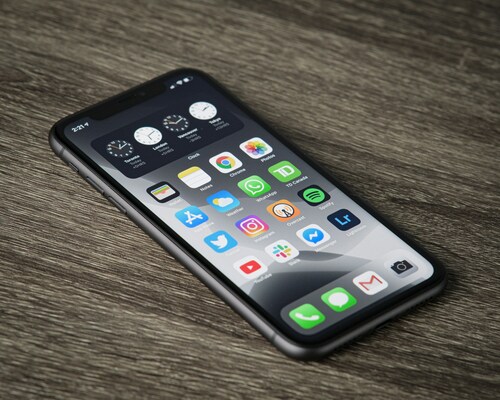
Introduction: The Rise and Recklessness of Social Media Influencers
The digital era has given rise to a new species of celebrity: social media influencers. These people have huge followings, work with major brands, and, in some cases, become more famous than traditional Hollywood stars. However, enormous influence entails great responsibility, and sadly, not all influencers utilize their platforms responsibly. The term “influencers gone wild” accurately describes the irresponsible, contentious, and sometimes even hazardous behavior that certain influencers participate in for the purpose of views, likes, and interaction.
These influencers frequently breach the line between fun and irresponsibility, executing reckless antics and sometimes breaking the law. In this essay, we will look at the rise of hazardous behavior among influencers, why they do it, and the implications of their conduct.
Pressure to Stay Relevant: Why Influencers Go Wild
Social media celebrity is transitory, and influencers must continuously reinvent themselves to remain in the spotlight. The need for new material and engagement frequently drives influencers to excessive lengths. Influencers gone wild is about more than just terrible decisions; it’s about the underlying pressures and motivations that drive these behaviors.
- The Constant Need of Attention
Social media algorithms prefer information that elicits engagement. This means that influencers must develop content that is shocking, hilarious, or provocative in order to keep their audience engaged. Some influencers take this too far, indulging in reckless pranks, inappropriate behavior, or even inventing dramatic circumstances to stay relevant.
- Competition between influencers.
With millions of influencers vying for the same audience, standing out is difficult. Some influencers feel compelled to push the rules in order to garner more followers, whether by risky acts, clickbait content, or provocative viewpoints that ignite online debate. The competition fosters the desire to outdo one another, which can lead to hazardous action.
- The Addictive Nature of Online Validation
The allure of social media fame is real. Likes, comments, and shares validate influencers, making it harder for them to walk away from the spotlight. When engagement begins to decline, some influencers resort to extraordinary measures—often disregarding the ethical and legal ramifications—to keep the numbers up.
Notable examples of influencers gone wild.
While some influencers walk a fine line between edgy and provocative, others have slipped into dangerous or unethical territory. Here are some real-world examples of influencers gone crazy who went too far.
- Dangerous stunts for views
In order to create jaw-dropping content, some influencers have attempted dangerous exploits. Hanging from skyscrapers without safety equipment, playing with fire (literally), or engaging in high-speed automobile chases for content have all resulted in fatalities. Some influencers have died or harmed others in order to gain more views.
- Fake Giveaways and Scams.
One of the most typical methods for influencers to go rouge is to host bogus giveaways or promote fraudulent schemes. Many followers have been duped into participating in contests with no actual prizes or investing in bitcoin ventures that turned out to be scams. When such fraudulent techniques are exposed, trust between influencers and their audiences erodes.
- Inappropriate and offensive content
Some influencers thrive on controversy, purposefully posting content that is unpleasant, culturally insensitive, or simply improper. Some influencers have been “canceled” for making insensitive comments about world catastrophes, as well as ridiculing religious traditions. While some recover from these controversies, others’ careers are permanently damaged.
The fallout: when going wild backfires
While being wild may create short-term attention, it frequently has long-term implications. Many influencers who engage in irresponsible activity face serious consequences, including the end of their careers.
- Dropping brand sponsorships
Many influencers make their principal income from brand deals. When they go too far, businesses swiftly distance themselves to avoid reputational harm. Brands do not want to be connected with influencers embroiled in scandals since it could damage their credibility.
- Being banned from social media
Social media networks have stringent restrictions against damaging and fraudulent information. Influencers who frequently breach these standards risk being blacklisted or demonetized. Without access to their platform, they would lose their entire audience and cash stream overnight.
- Legal issues and lawsuits.
Some influencers have faced serious legal implications for their conduct. Influencers who go too far frequently face severe legal consequences, ranging from trespassing on private property to fraud and defamation cases. In some situations, they will even face jail time.
Can Influencers Redeem Themselves after Going Wild?
Not all viral influencers are permanently canceled. Some make a return by admitting their flaws, rebranding, and emphasizing good content. However, redemption necessitates a sincere effort.
- Public Apologies and Accountability.
A well-crafted, honest apology can occasionally restore lost confidence. Influencers who own their mistakes and accept responsibility have a better chance of recovering trust. However, audiences can typically tell when an apology is merely damage control, so honesty is essential.
- Moving toward Positive and Responsible Content
Many influencers who have received backlash strive to shift to more responsible content. Whether they focus on mental health, humanitarian activities, or instructional content, rebranding can help them regain fans. However, this transition takes time and effort.
- Learning from the past
The most successful redemption stories have influencers who actually learn from their errors. Changing behavior, avoiding repeating scandals, and demonstrating progress over time can aid an influencer’s recovery from previous mistakes.
Conclusion: The Thin Line Between Influence and Irresponsibility
Influencers play a high-stakes game in which fame, money, and relevance motivate content providers to constantly push the envelope. While many people utilize their platforms appropriately, others fall into the trap of seeking engagement at any cost. Influencers gone wild is a developing trend that emphasizes the dark side of social media popularity, where scandal and irresponsibility can have career-ending implications.
For prospective influencers, the conclusion is straightforward: fame should never come at the expense of honesty. In an age where one incorrect move may spell the end of an online career, being attentive of content choices and their implications is more crucial than ever. The true issue is not simply gaining attention, but also sustaining respect and credibility over time.





